A report by the World Bank published in September paints a grim picture of the global economy in 2023. As more central banks increase interest rates, a trend that’s never been observed for half a decade, inflation rates might not return to pre-pandemic levels. Global gross domestic product (GDP) growth for 2023 is projected to slow down to 0.5%.
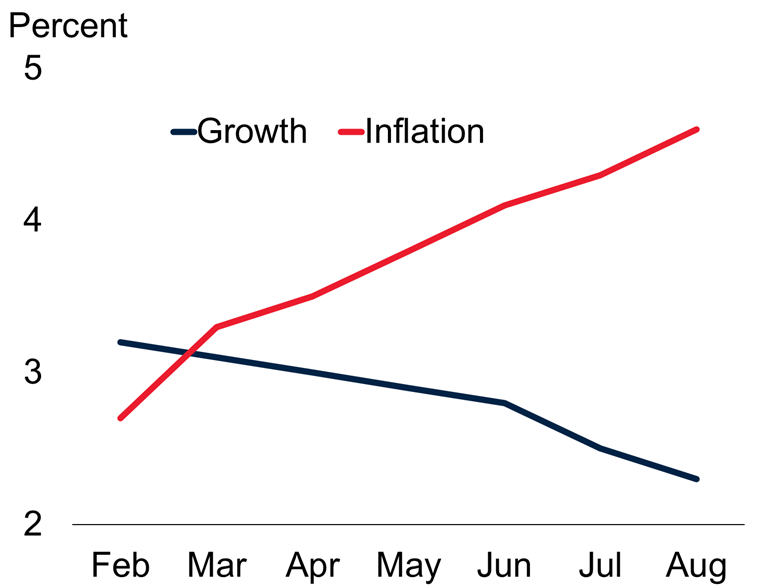
In simple terms, we’re heading for a recession. And yes, the pandemic’s still to blame.
Why am I talking about the state of the world economy on an SEO-related blog page? That’s because it’s a long-term strategy; it takes a really long time for a business to feel its benefits. Many things can change or occur within a year or less, so businesses carry on with uncertainty.
In a recession, cutting costs and shifting priorities are understandable. However, most experts agree that cutting the SEO budget to the point of ineptitude is a bad way to survive a recession. In fact, marketing is the last thing where you want to cut costs.
Whether in the middle of a recession or otherwise, businesses should keep a strong SEO strategy. Amid uncertainties in economic downturns, an SEO strategy is measurable, scalable, flexible, and – most importantly – effective. This blog post explains why SEO remains a must-have in such conditions and how businesses can guarantee SEO success during recessions.
People search all the time
A 2019 study found that nearly 70% of all online activities begin by firing up the search engine, more than any other activity, like opening your social media account. In other words, you more likely stumbled upon this blog post by looking it up on Google or Bing than on a friend’s news feed on Facebook or Twitter.
People are less likely to stop using search engines during a recession; if anything, they may keep looking for answers, hoping to weather such a storm. Recessions beg queries like ‘what expenses should I prioritise during a recession’ or ‘which item is cheaper.’
There are numbers to back this trend. A Pew study published near the end of the Great Recession found that more than two-thirds of people in the United States relied on the internet to help them through such hard times. This is amid the dominance of broadcast and print media at the time.
[caption id="attachment_20547" align="aligncenter" width="659"]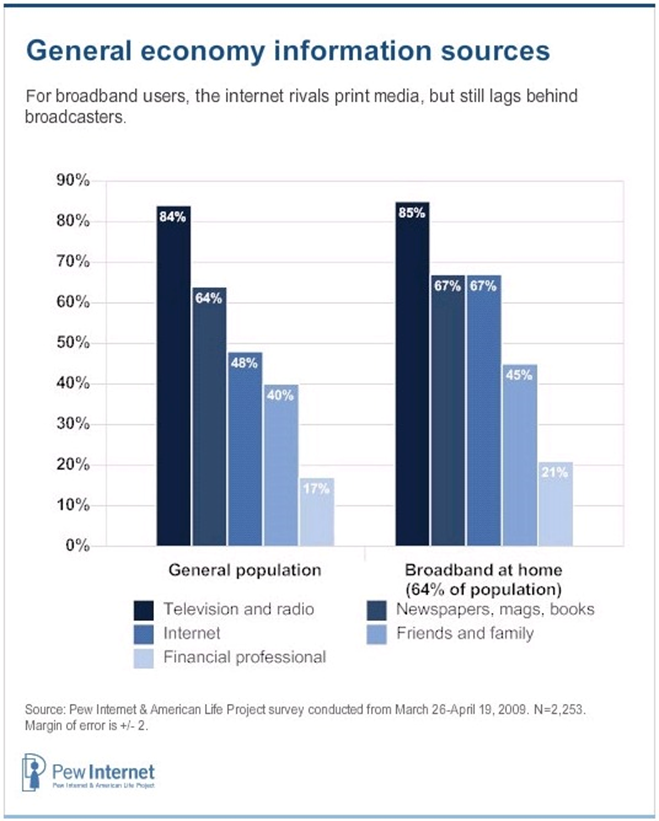 Image Source: Pew Internet[/caption]
Image Source: Pew Internet[/caption]
For a more recent example, look no further than the COVID-19 pandemic. The following graph from Google Trends shows how dependent people were on search engines to know more about the disease. The data presented here is for the search term ‘covid-19.’

The debilitating effects of the pandemic on the world economy were later known collectively as the Great Lockdown. Several industries collapsed due to quarantine measures preventing people from leaving their homes. As the lockdowns also paralysed supply chains, there was a shortage of just about everything, from toilet paper to semiconductors.
Fortunately, search data was one commodity that wasn’t in short supply. In a blog post, Sam Gilbert, an affiliated researcher at the University of Cambridge’s Bennett Institute for Public Policy, explains that search data has helped health agencies understand what people want to know. This fact holds even in countries with low internet penetration.
Gilbert cites queries for COVID-induced anosmia or loss of smell as an example, cited in this multinational study published last year. The correlation in anosmia-related queries relative to confirmed COVID cases was high.
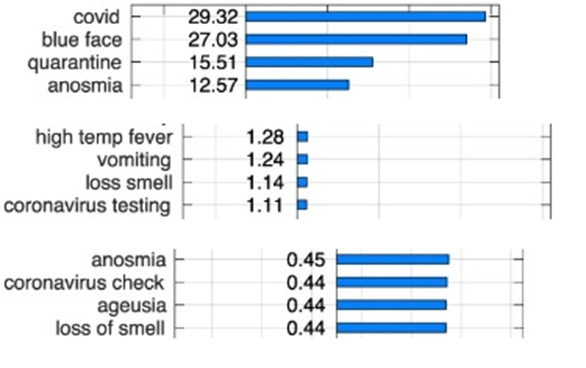
This kind of consumer behaviour presents a golden opportunity for businesses. With changing priorities, people will undoubtedly look for ways to make the most of their finances during the recession. Marketing a product or service as one such way will be the name of the game.
Understanding a recession consumer’s mind
The first step in devising a marketing strategy is always knowing the target audience – and it’s no different in a recession. Priorities in their purchases can influence their queries, highlighting the importance of a good SEO strategy.
Before that, however, it pays to understand two important things: the kind of product or service and the consumer groups to which you’re offering the product or service. According to an article in the Harvard Business Review (HBR), also published near the end of the Great Recession, any product or service can be one of the following four categories:
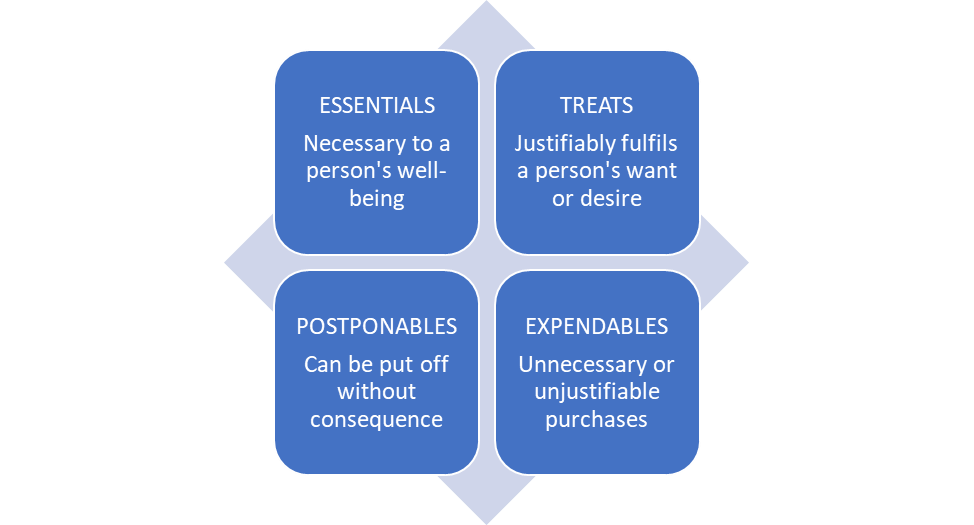
Essentials include the traditional basic needs, namely food, water, shelter, and clothing. In most cases, healthcare and transportation are also considered essentials. The categorisation for other goods shifts between the remaining three categories depending on a person’s priorities and the state of the market. Below is a rough idea of what a recession consumer may have in mind.

The article also states that even essential goods can be downgraded if the economic situation has grown grim enough. In this scenario, shelter and clothing are more likely to be re-categorised as postponables at best in a recession. Meanwhile, food and water are unlikely to be re-categorised because humans need to eat and drink to survive.
Wherever your product or service falls, your consumer base will still have at least four groups. Here’s how the HBR classifies these consumers and how they prioritise their purchases.
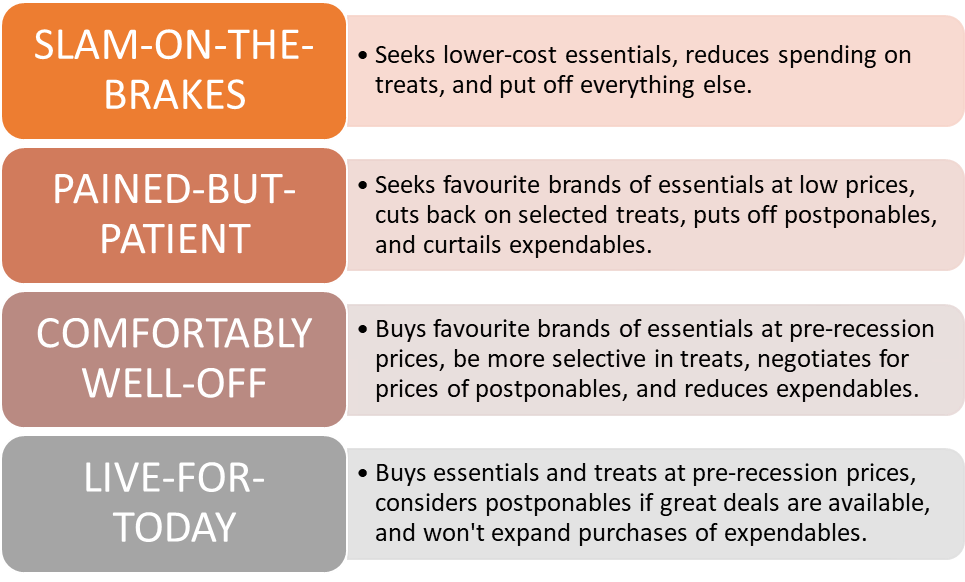
Notice that only the first three groups tend to be more frugal with their money in an economic downturn. That said, there’s a unique strategy to appeal to every consumer group that buys a certain item group. There’s even a strategy for selling expendables, even if it entails offering do-it-yourself solutions or waiting for consumers’ finances to improve.

The importance of brand protection
Following the Great Recession, most companies realised the importance of protecting their brand equities too late. A survey in 2009 revealed that the downturn had prompted more than 80% of companies to invest more resources in safeguarding their brands from competitive threats. Yet, only a fifth of them had taken a more proactive role since.
Many business owners don’t understand that a lack of brand protection is basically, as one expert points out, ‘relinquishing your brand’s story to others.’ In this information-driven era, not having information on your brand allows competitors to be the source of that information. Third-party sources may provide an unbiased view but aren’t obligated to adhere to the brand’s guidelines.
One relatively common practice entails buying a competitor’s brand keywords. For example, Ford can pay for its F150 ads to appear in queries for a Chevrolet Silverado. Although Google maintains that it recognises trademarks, it also insists that the practice doesn’t constitute trademark infringement. Courts in many countries maintain a similar stance.

Legal experts agree that there isn’t much a business can do to prevent a competitor from seizing such opportunities. Filing a complaint with Google is still an option, but it’s equally important to be more proactive about brand protection.
SEO professionals believe that there’s no other approach that’s more proactive than bidding on the business’s own brand name. As illogical as it sounds, tests done by some marketers confirm that bidding on your own brand is a good way to maximise return on investment (ROI).
However, note that brand bidding won’t always be a sensible option, particularly from a net profit perspective. Marketers say it won’t make sense if businesses make more money from organic traffic with no ads. Otherwise, experts suggest adhering to these five steps:
- Define goalsSometimes, revenue isn’t the end goal of a brand bidding strategy. Google knows this and advises the most suitable strategies for each of the following three focuses:
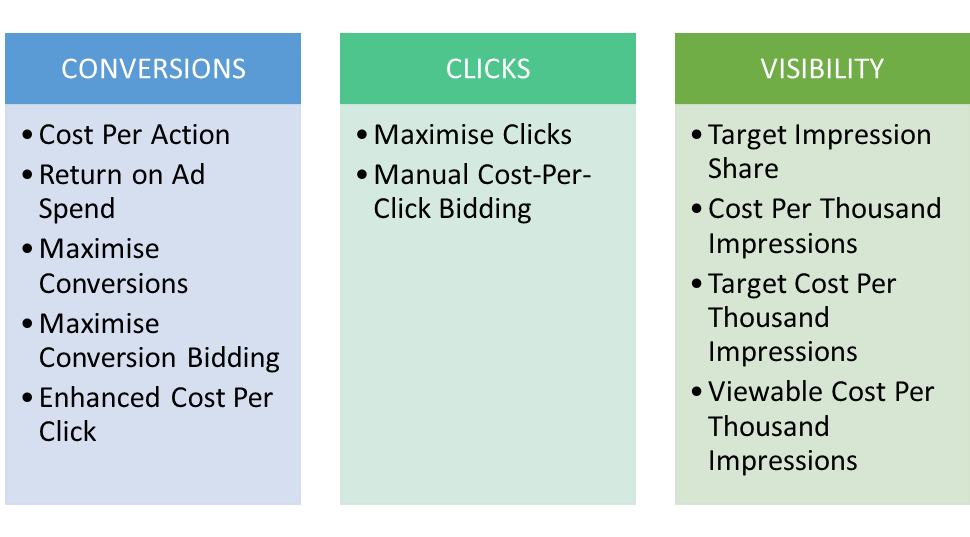 Conversions are a priority when a business wants more customers to do more than visit its website. Focusing on clicks is ideal if a business needs to increase traffic to its website. Lastly, visibility should be the primary goal if a business has to rank in search results. Save for manual cost-per-click bidding, all the strategies mentioned here are automated.
Conversions are a priority when a business wants more customers to do more than visit its website. Focusing on clicks is ideal if a business needs to increase traffic to its website. Lastly, visibility should be the primary goal if a business has to rank in search results. Save for manual cost-per-click bidding, all the strategies mentioned here are automated. - Perform a SERP analysisA search engine results page (SERP) analysis examines the nature of the SERP of a specific keyword to determine its features, difficulty in ranking, and the competitor’s advantages in this domain. Essentially, the analysis lets you know where to outrank the competition or rank without much competition.Third-party tools like the MozBar extension and Ahrefs SERP Checker provide a seamless way to conduct SERP analysis. In the latter’s case, the tool is also available on its flagship SEO analytics tool. Below is the analysis for the query ‘pursuit online marketing.’

If you click the keyword itself, it’ll take you to the Keyword Explorer page, where you’ll be greeted with more data. Don’t forget to update the metrics by clicking ‘Update’ to get the most recent information.

Given a Keyword Difficulty score of 0, it would be easy for Pursuit Digital to rank in the top 10 in the query’s SERP. However, the analysis presents a complication: A likely competitor dominates this keyword—and it has the same business name as we do. While both companies are continents apart, as SEO services often cater to a global clientele, it can create confusion.
- Measure the bidding valueKnowing potential competitors in a keyword is one thing, but knowing if outranking them is worth it is another. Emphasis on the term ‘worth’ since the value of a business decision isn’t only gauged by revenue gains. Other measures of value include:
- Mitigation of brand misrepresentation
- Intelligence on competitor’s keywords
- Discovery of new market segments or niches
- Improved click-through rates (CTR)
- Compensation for poor organic search
- Mitigation of negative impressions
- Augmenting low-traffic products or services
Then again, you’re probably reading this in the middle of a recession, so revenue is hard to ignore. Experts say the best metric for measuring your bid’s value is the return on ad spend (ROAS), which measures revenue for each dollar spent on marketing. Calculating ROAS is as easy as dividing the conversion value by the advertising cost.
A ROAS of less than one indicates that the business loses more money in the campaign than it generates. You also don’t want to aim for a ROAS of exactly one; sure, you aren’t losing money, but you aren’t earning money, either. Experts recommend achieving at least a ROAS of 3.0, though the actual figure depends on the business’s needs.
- Put together your frameworkOnce you have enough information, the next step is to put together what experts refer to as a ‘strategic framework.’ It’s the part of brand bidding where you ask yourself many questions. Is the bidding to resolve any external or internal issues? Will the campaign be aggressive or conservative? What are the key performance indicators (KPIs)?It’s worth remembering that a bid should focus on its own campaign, not offset campaigns falling short on results. Otherwise, the overall result may be underwhelming.A good template for the framework involves describing the details of the bidding campaign to each audience group. You have one campaign for your existing customer base and one for the cold, warm, and hot leads each.
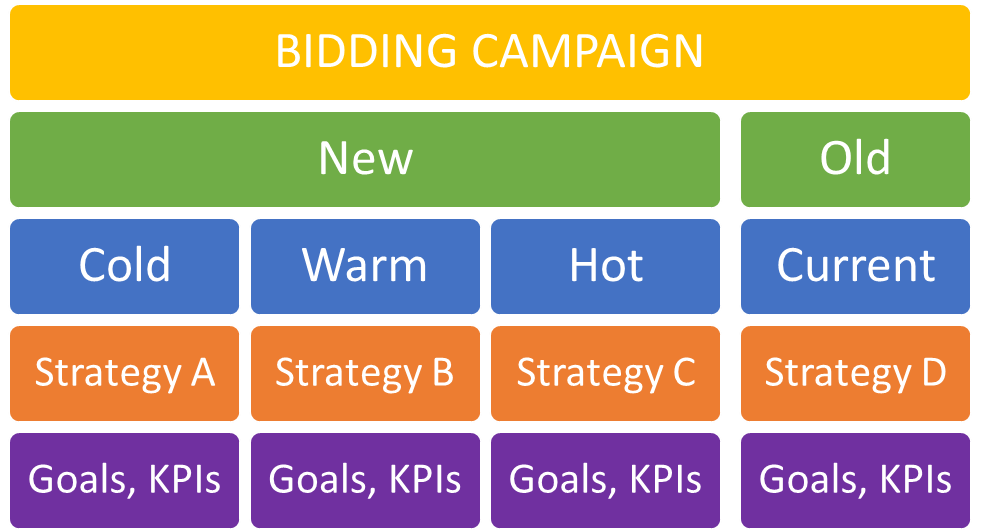
- Bid or don’t bidThe last step involves deciding whether or not to bid on a keyword. There’s no need to be involved in every keyword in a niche, as doing so may negate gains in revenue generated.If you opt to bid, an optimised ad copy is the best way to go about it. An optimised ad copy should have the following features:
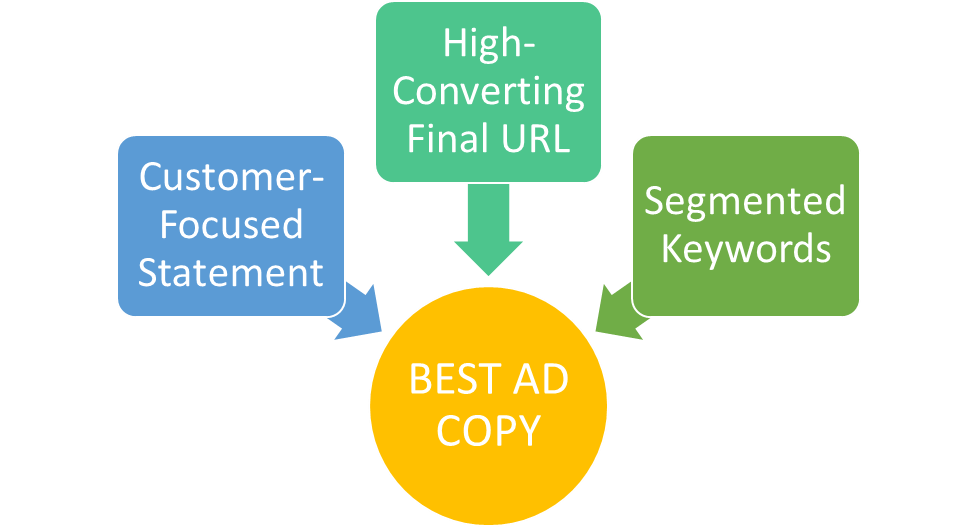
On the other hand, if you choose not to bid, use negative keywords to your advantage. By registering a negative keyword, a business can prevent its ads from appearing when users search for them. This is done to mitigate inaccurate search results.
For example, you’re selling reading glasses but don’t want your ads to appear in queries for ‘wine glasses.’ Without setting ‘wine glasses’ as a negative keyword, ads for reading glasses can appear since both contain the term ‘glasses.’ Businesses might end up paying more for campaigns that aren’t only irrelevant but also generate low ROI.
Google lets you exclude broad, phrase, or exact matches of keywords. Below are examples of how each match works.

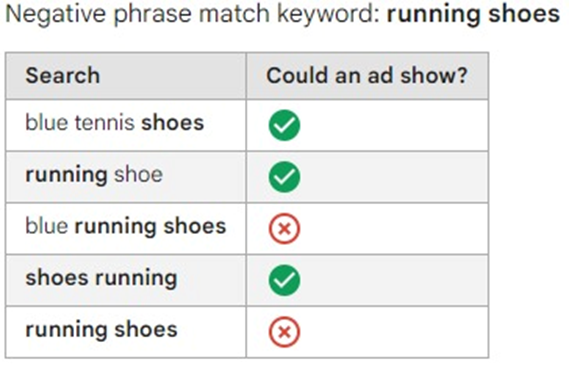
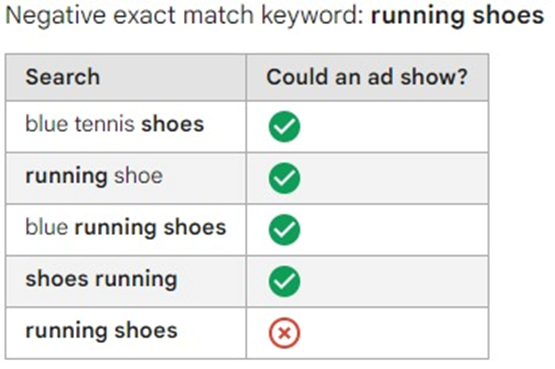
Post-recession opportunities
To quote the German philosopher Friedrich Nietzsche (and also one of Kelly Clarkson’s songs): ‘What doesn’t kill you makes you stronger.’ A business that withstands an economic downturn often comes out of it more lucrative and resilient. There’s no shortage of these success stories in the media, some of which are attributable to SEO strategy best practice routines.
I mentioned at the start that SEO is a long-term strategy. A common misconception is that SEO is this switch you flick to outrank the competition instantly. But as this Ahrefs data analysis of 2 million keywords shows, most of the top 10 results have been around for over 3 years.
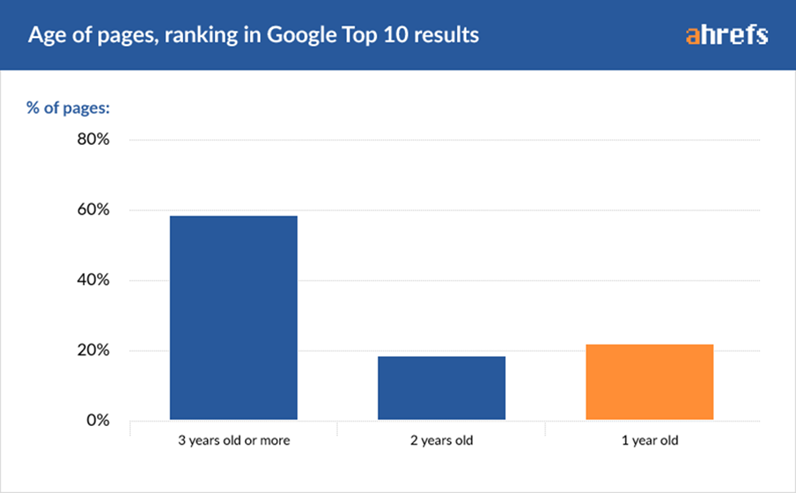
Why does it take this long to rank? A lot of factors, but it’s safe to narrow it down to three.

Simply put, your business is up against millions of others vying for the coveted top 10 positions, if not the top spot. The struggle becomes much harder in certain keywords; ranking in the top 10 requires plenty of quality backlinks. No SEO strategy guarantees that its benefits will take effect immediately; all these gears must move in unison.But waiting this long isn’t a bad thing. By the time the economy rebounds and people can spend to their heart’s content, a business that survives the recession will be in a better position. Imagine this: the customer base you’ve fostered throughout the slump will be able to refer new customers in the new economic normal. To them, your business has already proven its worth.
Another good reason to keep up SEO efforts during a recession is that changes in doctrine carry on nonetheless. Even as the World Health Organization declared the beginning of the pandemic in March 2020, Google’s updates kept coming. As of this writing, the search engine has released 23 updates since that declaration. Among the most notable updates are:
- May 2020 Core Update – The first update released during the pandemic, this update generally focused on Expertise, Authoritativeness, and Trustworthiness (E-A-T).
- Index Glitch – Response to an unusual increase in low-quality websites ranking high in SERPs in early August 2020; completed the following day.
- Product Reviews Update – Released in April 2021, the update enables the algorithm to prioritise product reviews that demonstrate firsthand expertise.
- Harassment Protection Update – Released in June 2021, the update enhances Google’s ability to flag sites that engage in harassment or other predatory practices.

These updates, whether minor or major, change the way SEO is done. Businesses must adapt to these changes, lest they risk losing a substantial portion of their organic traffic. Many still recall what the Panda and Penguin updates did, and there’s no reason Google won’t introduce a similar update in the future.
Conclusion
As the possibility of a new recession looms, businesses have to pay more attention to their SEO strategy. Cutting marketing budgets is the worst step they can take, as those that do often never recover to pre-recession levels after the recession passes.
The key takeaway in this piece is that online search will carry on regardless of the circumstances. People will continue to search for answers, and algorithms will continue to receive vital updates. It stands to reason that SEO will keep changing to adapt to these changes – all the more reason to guarantee SEO success, recession notwithstanding.
It pays to act now while the economy’s still relatively stable. Contact reliable SEO services such as Pursuit Digital to learn your business’s options. We desire to see it survive the recession and thrive after that.
